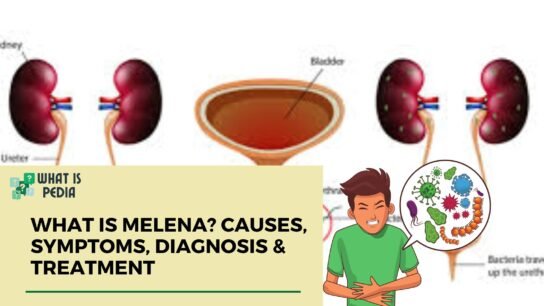Introduction
Addison’s disease is a rare but serious medical condition that affects the adrenal glands, leading to insufficient production of essential hormones such as cortisol and aldosterone. The adrenal glands, located above the kidneys, play a crucial role in regulating metabolism, immune response, blood pressure, and stress management. When these glands fail to produce enough hormones, it can result in severe health complications, including fatigue, weight loss, and dangerously low blood pressure.
Understanding what is Addison’s disease is essential because it helps raise awareness about this life-threatening condition, enabling individuals to seek timely diagnosis and treatment. Although the disease is uncommon, its impact on the body can be profound, requiring lifelong management and medication.
This blog aims to provide a comprehensive understanding of Addison’s disease causes, symptoms, diagnosis, and treatment. By exploring the various aspects of this condition, we hope to shed light on how individuals affected by Addison’s disease can manage their symptoms and improve their quality of life. Additionally, we will discuss the difference between Cushing disease and Addison disease, as both disorders affect adrenal hormone production but have opposite effects. Lastly, we will explore treatment options, lifestyle modifications, and real-life experiences to help patients and caregivers navigate this condition effectively.
1. What is Addison’s Disease?
Definition and Medical Explanation
Addison’s disease, also known as primary adrenal insufficiency, is a condition in which the adrenal glands do not produce enough steroid hormones, particularly cortisol and aldosterone. Cortisol is essential for managing stress, blood sugar levels, and metabolism, while aldosterone helps maintain blood pressure and electrolyte balance.
When the adrenal glands fail, the body struggles to regulate these functions, leading to a range of symptoms that can be debilitating if left untreated.
Role of the Adrenal Glands
The adrenal glands are small, triangular-shaped organs located on top of each kidney. They are part of the endocrine system and are responsible for producing:
- Cortisol: Regulates metabolism, immune response, and stress.
- Aldosterone: Maintains blood pressure and sodium-potassium balance.
- Adrenaline (Epinephrine): Helps the body respond to stress.
- Androgens: Contribute to secondary sexual characteristics and other functions.
Primary vs. Secondary Adrenal Insufficiency
- Primary adrenal insufficiency (Addison’s disease): Direct damage to the adrenal glands, leading to a lack of hormone production.
- Secondary adrenal insufficiency: Caused by pituitary gland disorders that reduce ACTH production, which stimulates cortisol production in the adrenal glands.
Historical Background and Discovery
Addison’s disease was first identified by British physician Thomas Addison in 1855. He observed that patients with adrenal gland damage exhibited extreme fatigue, skin pigmentation, and weight loss. Since then, medical advancements have allowed for better understanding, diagnosis, and management of the condition.
2. Addison’s Disease Causes & Risk Factors
Primary Causes of Addison’s Disease
- Autoimmune Disorders: The most common cause, where the immune system attacks the adrenal glands.
- Infections: Tuberculosis (TB), fungal infections, and HIV can damage the adrenal glands.
- Genetic Factors: Rare genetic disorders such as congenital adrenal hyperplasia can lead to adrenal insufficiency.
- Cancer: Metastatic cancer spreading to the adrenal glands can impair function.
- Medications: Long-term use of steroids can suppress adrenal function.
Secondary Causes
- Pituitary gland disorders affecting ACTH production.
- Long-term corticosteroid use and sudden withdrawal.
Risk Factors
- Family history of autoimmune diseases.
- Chronic infections such as TB or HIV.
- Previous adrenal surgery or damage.
- Certain genetic mutations.
3. Addison’s Disease Symptoms & Early Warning Signs
Common Symptoms
- Fatigue and muscle weakness.
- Weight loss and decreased appetite.
- Low blood pressure and dizziness.
- Skin darkening (hyperpigmentation), especially in sun-exposed areas.
- Salt cravings and dehydration.
Severe Symptoms (Addisonian Crisis)
- Severe dehydration.
- Confusion and loss of consciousness.
- Low blood pressure leading to shock.
- Abdominal pain, nausea, and vomiting.
Progression of Symptoms
Symptoms develop gradually but worsen over time if untreated. A sudden Addisonian crisis requires immediate emergency treatment.
4. Difference Between Cushing’s Disease and Addison’s Disease
| Feature | Addison’s Disease | Cushing’s Disease |
| Hormone Level | Low cortisol | High cortisol |
| Symptoms | Fatigue, weight loss, low BP | Weight gain, high BP, moon face |
| Skin Changes | Darkening (hyperpigmentation) | Thinning, bruising |
| Cause | Adrenal failure | Excess ACTH production |
| Treatment | Hormone replacement | Surgery, medication |
Proper diagnosis is crucial to differentiate between these conditions.
5. Addison’s Disease Diagnosis & Tests
Diagnostic Tests
- ACTH Stimulation Test: Measures adrenal response.
- Cortisol Blood Test: Determines hormone levels.
- Electrolyte Tests: Checks sodium and potassium levels.
- Imaging Tests: MRI or CT scans to detect adrenal abnormalities.
6. Addison’s Disease Treatment & Management
Medication-Based Treatment
- Corticosteroid Replacement Therapy: Hydrocortisone, prednisone, or dexamethasone.
- Mineralocorticoid Therapy: Fludrocortisone to regulate sodium and potassium balance.
Lifestyle Modifications
- Balanced diet rich in sodium.
- Stress management techniques.
- Wearing a medical alert bracelet.
Emergency Treatment for Addisonian Crisis
- Immediate IV hydrocortisone.
- Fluid replacement therapy.
- Hospitalization if necessary.
7. Living with Addison’s Disease
Long-Term Management
- Regular medical check-ups.
- Awareness of symptoms to prevent crises.
- Psychological support and lifestyle adjustments.
Support Groups and Resources
- Online communities and patient forums.
- Medical organizations providing updated research.
Personal Stories
Real-life accounts of patients managing Addison’s disease successfully.
Conclusion
Addison’s disease is a serious condition that requires lifelong treatment and management. Understanding Addison’s disease causes, symptoms, diagnosis, and treatment is crucial for early detection and effective management. Differentiating between Cushing disease and Addison disease ensures proper treatment.
Early diagnosis and proper medication can significantly improve quality of life. If you experience symptoms, seek medical help promptly.
Read More: What is Asthma? Symptoms, Types, Causes, and Treatments.







